The Sims 3 Game Registration
EA - Maxis Studio | 2012
Web
Background
TheSims3.com is where users go to register their account and games for The Sims 3 in order to gain access to its online features and digital content included with each release. While it sounds straightfoward, years of legacy account types and many released titles made for a pretty complex registration flow.
With the creation of EA's Origin, TheSims3.com now had to add a new account type in to its registration system. We took this opportunity to also address other issues in account registration.
Key Highlights
- Simplified the user experience by simplifying the entry point and taking account-type selection out of the user's hands
- Consolidated multiple user flows in to 1 with system checks along the way to create a consistent end result for the user
- Reduced developer support requirements for each new game released, so less budget could be spent on routine support work
- Combined Origin ID and TS3 Persona registration in a way that kept legacy users happy but also automated the system for new users
About EA Maxis
Electronic Arts (EA) acquired Maxis in 1997, rebranding it into the internal studio, EA Maxis (now part of EA Mobile). EA Maxis is best known for its simulation-style games, such as The Sims, SimCity, and Spore.
About The Sims 3
The Sims 3, released in 2009, is a simulation game that allows players to play with life by controlling Sims (in-game people) and manipulating their relationships and environments. With the addition of purchased Expansion Packs, players can expand their gameplay with new features, such as seasonal weather (The Sims 3 Expansion Pack: Seasons) or scuba diving in the ocean (The Sims 3 Expansion Pack: Island Paradise).
Process
Agile Development is great for getting applications released quickly, but it runs a risk of creating patchwork experiences. When The Sims 3's Registration Flow was originally created, each entry point was created separately and had its own UX flow. As the franchise grew, this became difficult to maintain.
First step was to consolidate the variables and minimize entry points and account types.
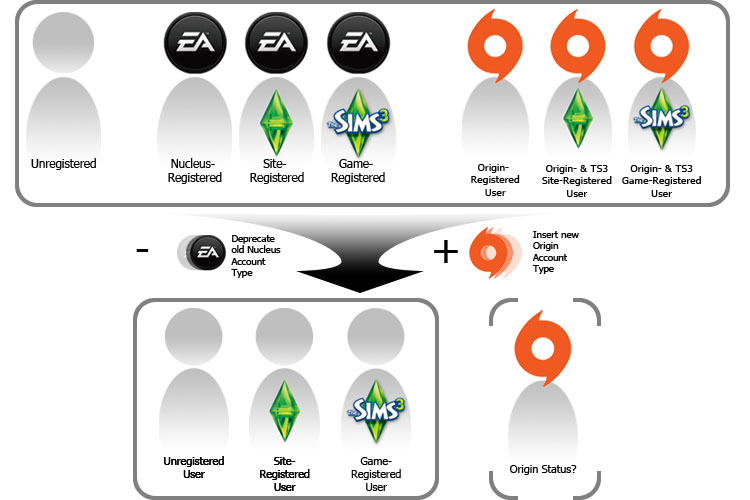
The new Origin Account Type greatly increased the variety of accounts and edge cases when addressing user types. We reduced the account types to the bare minimum needed.
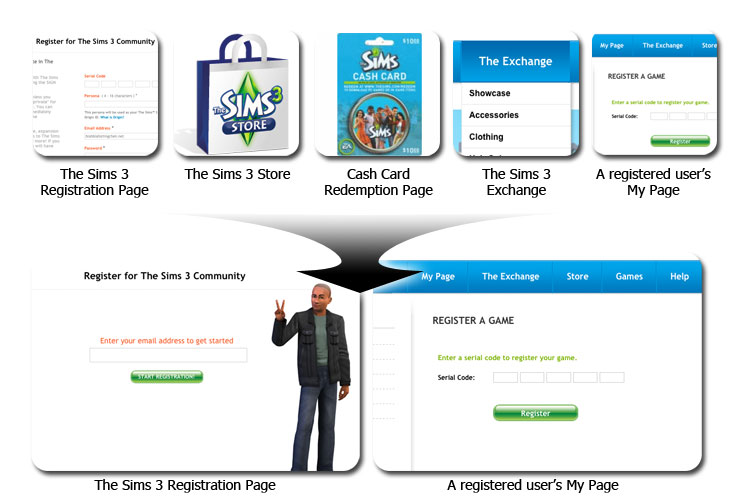
Entry points were consolidated by having all registration prompts point to 1 of 2 locations.
Next step was to combine and then streamline the user flow to cover all edge cases and minimize the number of required checks in the registration system.
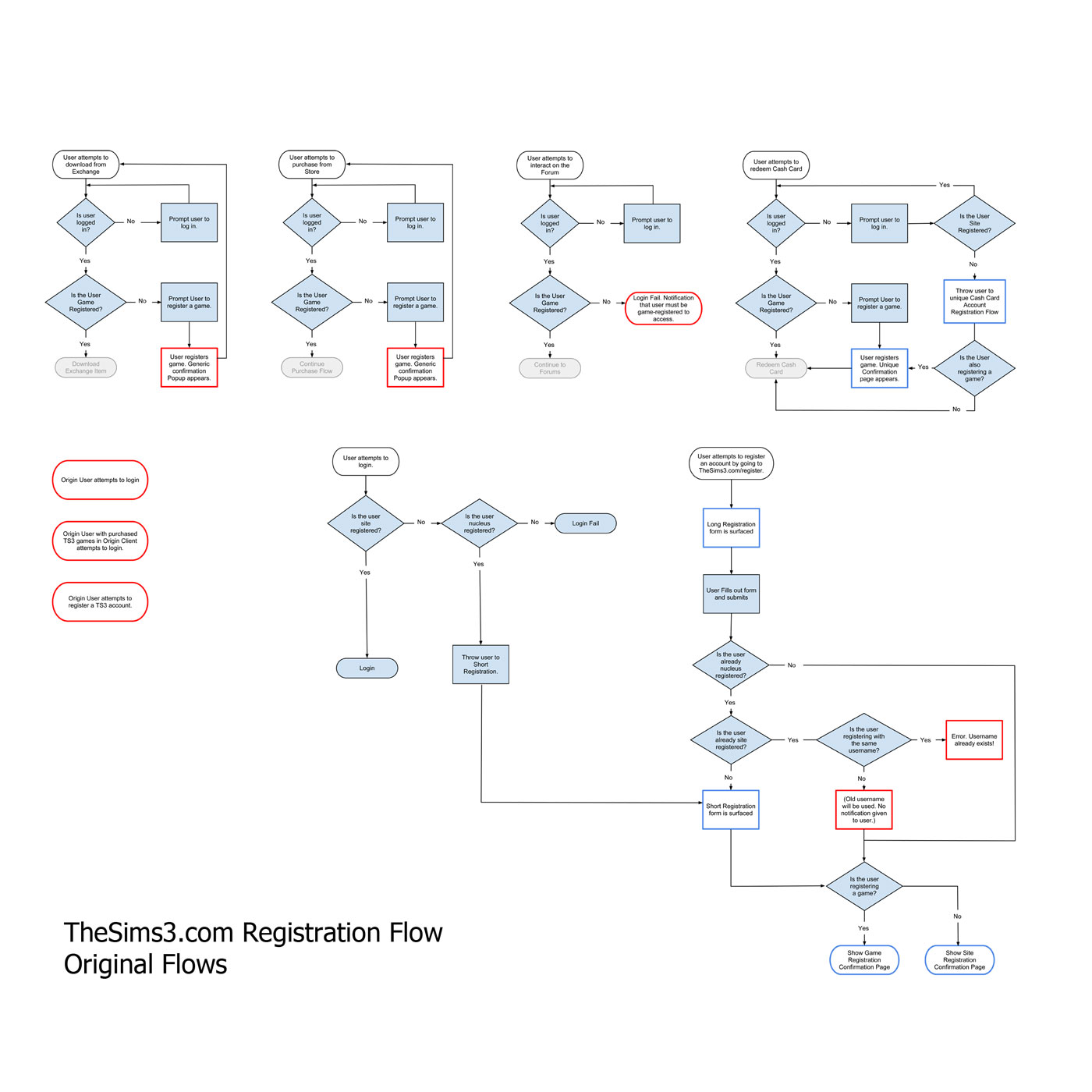
The Original Registration Flow - had unaddressed edge-cases and was segmented in to separate UX flows.
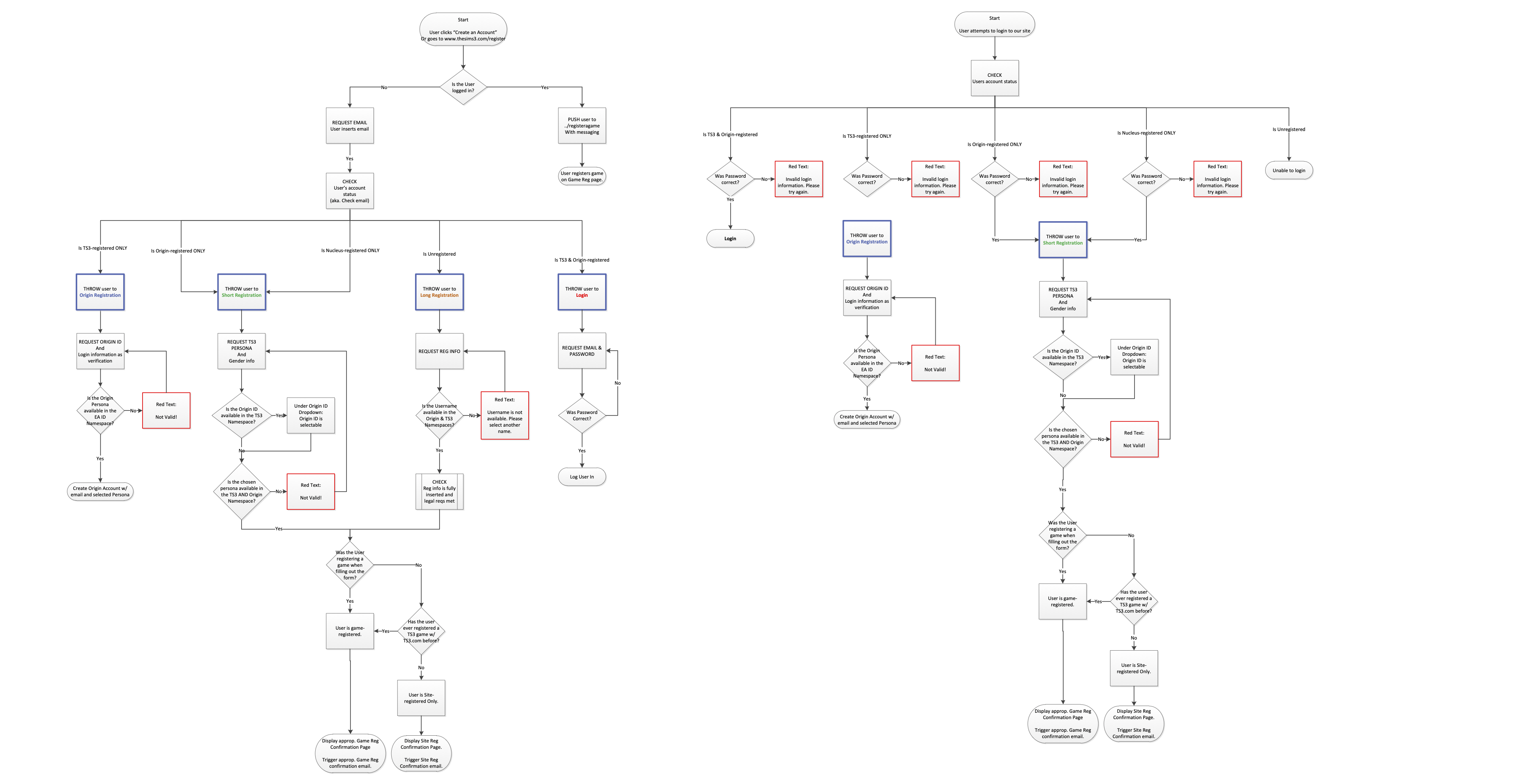
Version 2 - was created first to combine all entry points and cover all edge cases.
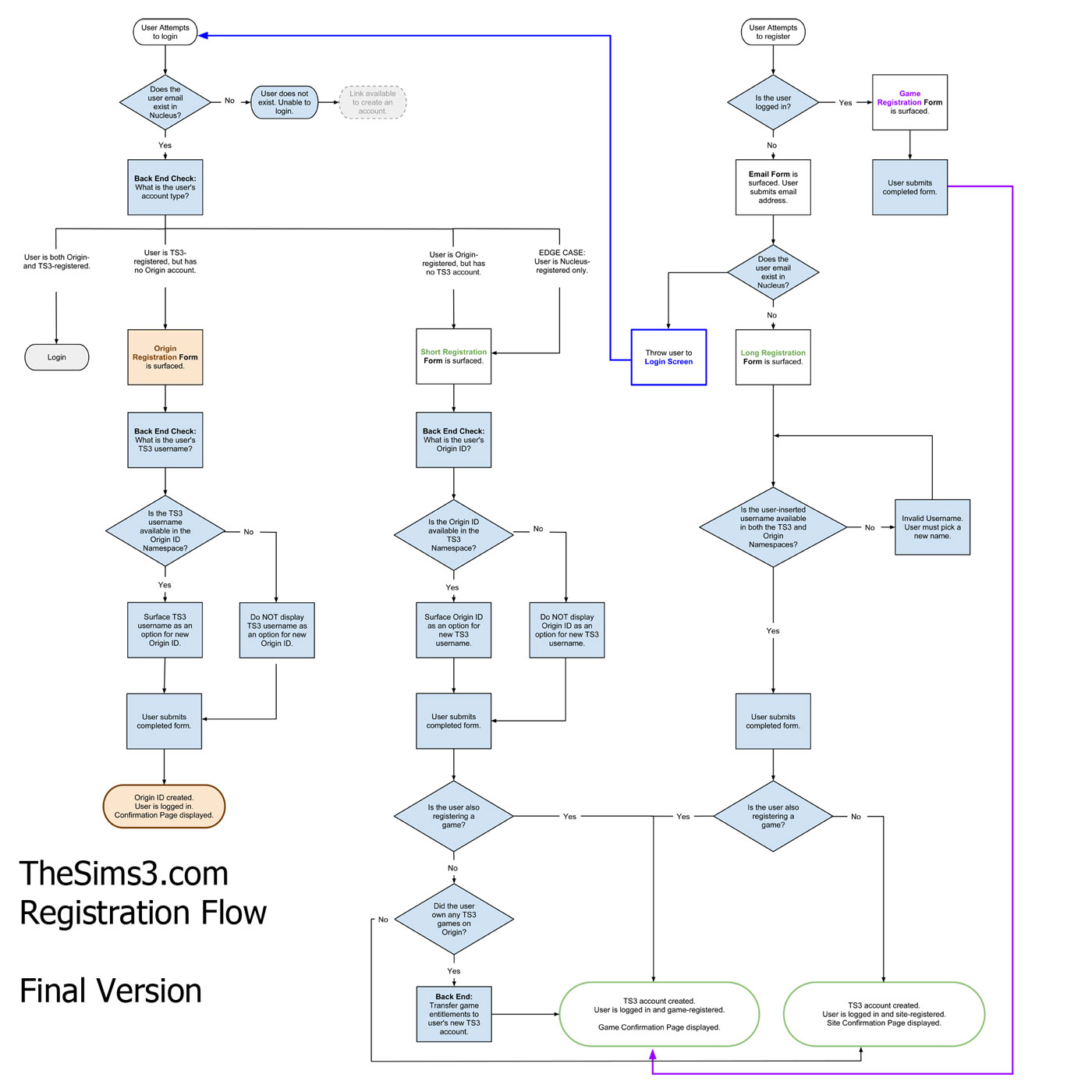
Final Version - streamlined version 2, removing the excessive pages and checks and simplifying the user experience.
Finally, a front-end pass was made. Rather than require the user to know the details of his/her own account, we do a backend check for the information ourselves, then surface the correct registration form for that user.
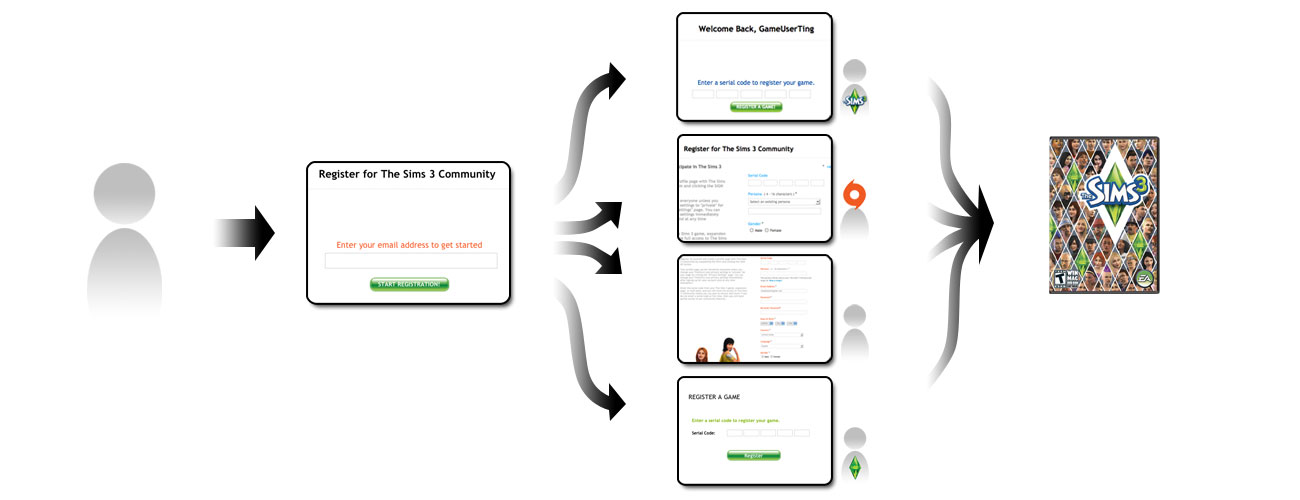
User's experience didn't show any of the complexity behind account or game registration. Instead it started with the user's email and only showed what was necessary for that customer.